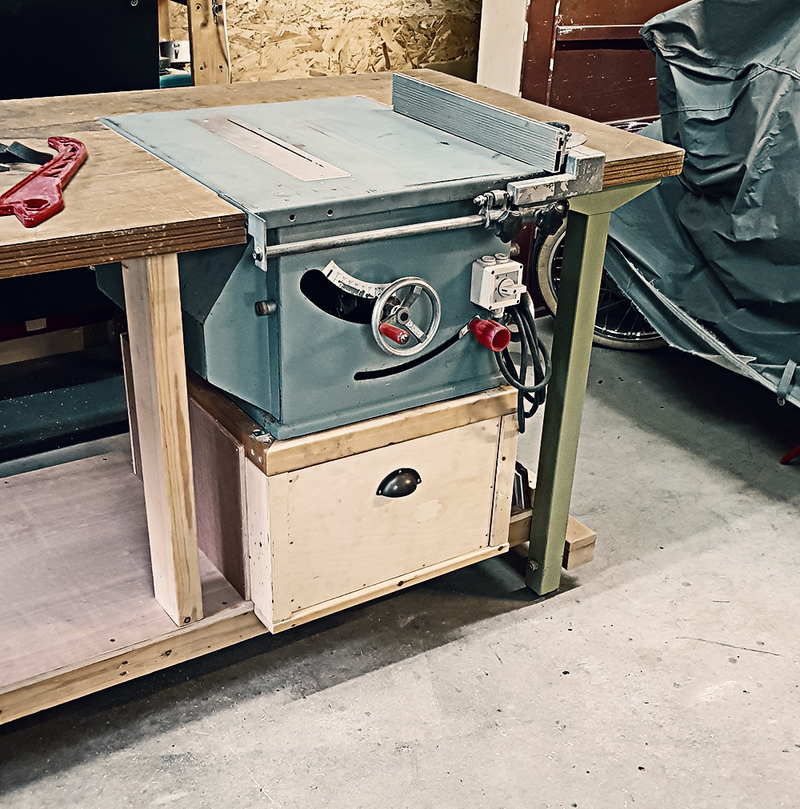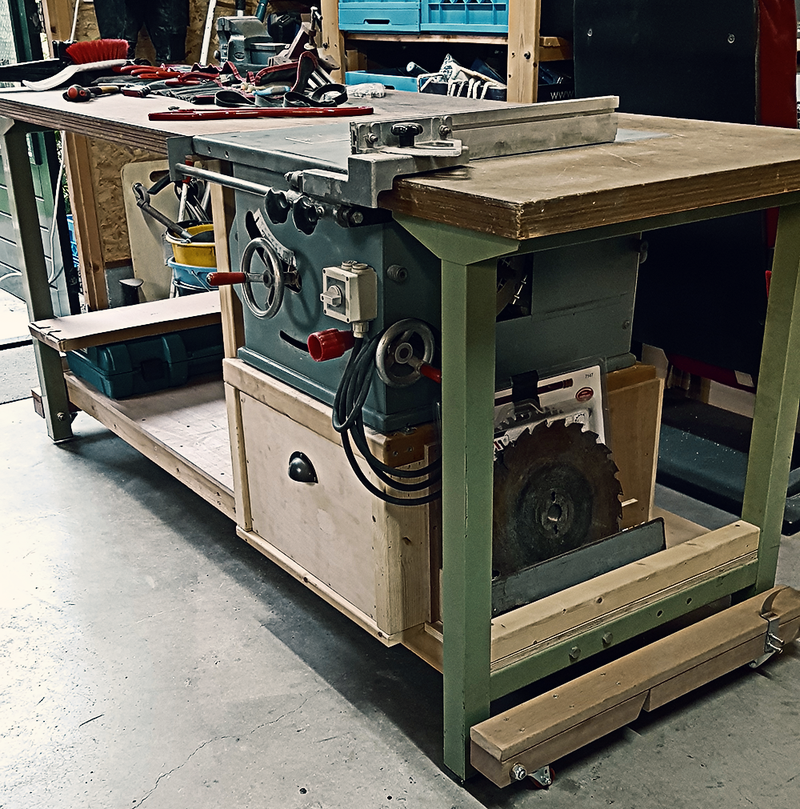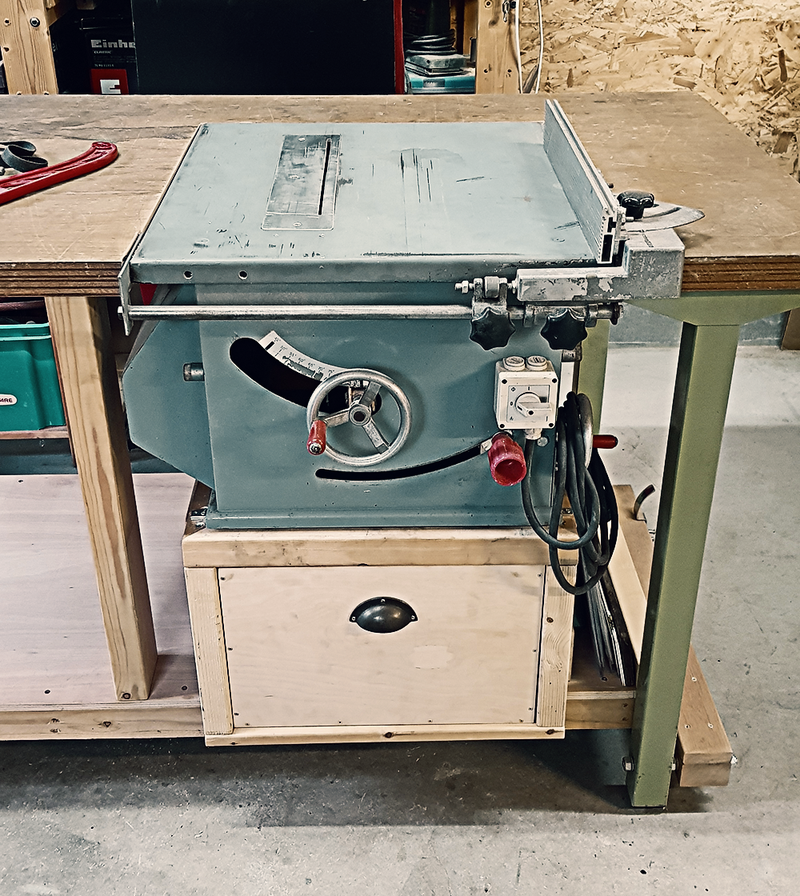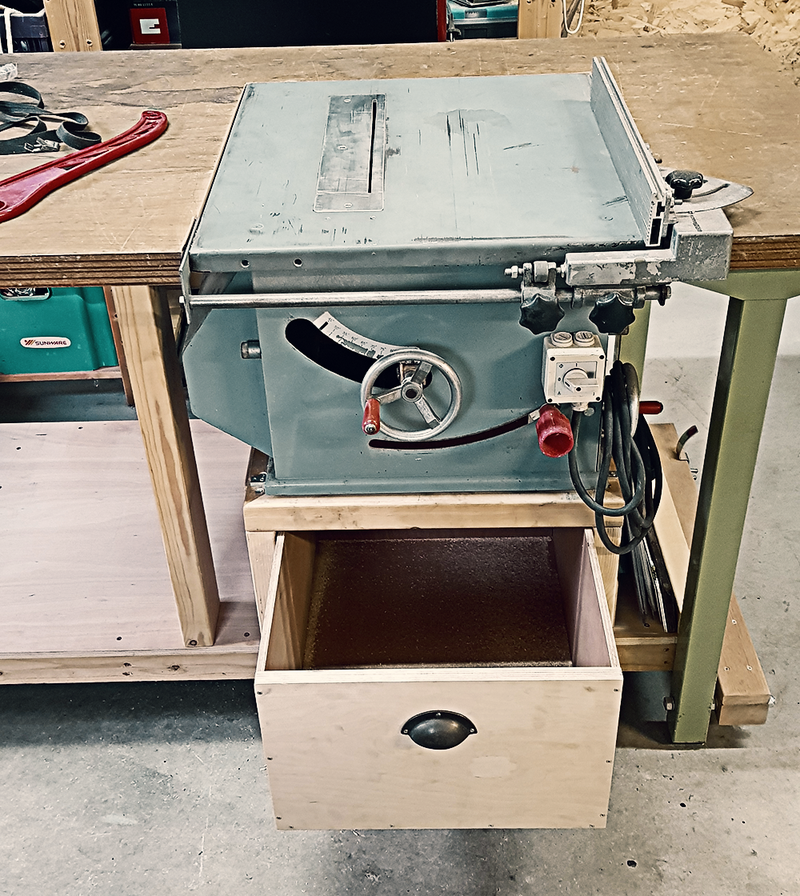Workbench modification

Production: MÆNUS
Materials: Wood and metal
Techniques: Mechanical engineering, woodworking, metalworking
Finished: 2021
In 2021 I bought a second hand workbench for my workshop. There were a few requirements that were important for me in order to do make the modifications I wanted:
- The workbench top had to be solid wood and not supported by a frame on the underside
- The workbench had to have certain dimensions
- The frame of the workbench had to be very solid and preferably made of metal
After finding a workbench which met these requirements I modified it in a couple of steps.
Modification: Castor wheels
Problem:
The first modification was to be able to easily move the workbench around in my workshop. The easy way is to mount a castor wheel with breaks on each of the legs. Downside to this solution is that the workbench would never stand super stable. Castor wheels always have a little bit of movement or slack in them, even when the breaks are on.
Solution:
My solution was to make a system of retractable castor wheels, so that the workbench would stand on its own legs when the wheels were retracted. This ensures a stable workbench that will not easily move around if you exert a lot of force on it. If I wanted to move the workbench around I wanted to be able to lower the castor wheels, lifting the whole workbench off the ground.
After some online research and some prototyping I decided on an easy system with levers. Below you can see an image of the leverage system on one side of the workbench. The other side is exactly the same but mirrored.

The levers themselves are made of hardwood. The pivot points are made from threaded rods that are secured in each of the legs. I pressed a metal tube into the pivot points of the wooden levers for extra strength and durability. On each side there is a long lever at the top which allows me to lift and lower each side of the workbench hands-free by pushing down on it with a foot.

The biggest challenge however was to engineer a latch and lock system which I could also operate hands-free. Through multiple iterations I came up with the system as shown below. A single stainless steel latch that gets pushed to the side when the lever comes down and springs back into place in order to lock the lever in the downward position. To unlock the lever I push with my shoe against the latch while keeping my foot on the lever. This pushes the lever out of the way allowing the lever to come up and lower the workbench back on its feet.



Modification: Storage shelf
Problem:
There is always a shortage of storage space in a workshop. So the space underneath a workbench top is valuable storage space. The workbench I bought didn’t have a shelf there so I decided to add it myself.
Solution:
My solution was to make use of the crossbar connecting the frame with the legs on the left and right side and build a storage shelf around it. I added two wooden cross-beams next to the metal crossbar and mounted a plywood board on top. This created the extra storage space I needed and added functionality to my new workbench.


Modification: Built-in table saw
Problem:
A table saw usually takes up a lot of floor space in a workshop, is big and heavy and can’t be moved around easily. It is also not a tool I would be using daily. So I was looking for a solution where it would not stand in my way and that allowed me to move it around easily.
Solution:
My solution was to build the table saw into the workbench. This meant the table saw didn’t occupy limited floor space and I would be able to move the table saw around by lifting, turning and moving around the workbench.
First I decided on the location of the table saw in the workbench top. Then I cut out the hole to fit the table saw top.

Next I built the wooden frame the table saw would stand on and added wooden panels on the outside. Within the wooden frame I built a drawer that catches much of the sawdust and off-cuts and mounted a nice old cast iron handle on the front.




End result
The end result is a workbench which can be moved around easily, but stands very sturdy and stable once lowered onto its legs. If I want to use the table saw I can move the workbench quickly so I can easily access it and still use the other end of the workbench to work on other things. Furthermore I can store a lot of tools and materials on the storage shelf below the workbench top which also adds weight to the workbench causing it to stand even more solid.


